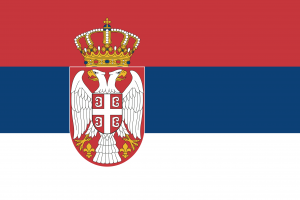Difference between revisions of "Language/Serbian/Grammar/Verbs:-Participles"
m (Quick edit) |
m (Quick edit) |
||
| Line 8: | Line 8: | ||
As a Serbian language teacher with 20 years of experience, I am excited to introduce you to the concept of participles in Serbian. Participles are verb forms that can function as adjectives or nouns. They are formed by adding a suffix to the stem of the verb, and their endings change according to the gender, number, and case of the noun they modify. In this lesson, we will explore the different types of participles, their formation, and their usage in Serbian. | As a Serbian language teacher with 20 years of experience, I am excited to introduce you to the concept of participles in Serbian. Participles are verb forms that can function as adjectives or nouns. They are formed by adding a suffix to the stem of the verb, and their endings change according to the gender, number, and case of the noun they modify. In this lesson, we will explore the different types of participles, their formation, and their usage in Serbian. | ||
<span link>Consider broadening your understanding by checking out these related lessons: [[Language/Serbian/Grammar/Verbs:-Perfective-and-Imperfective|Verbs: Perfective and Imperfective]] & [[Language/Serbian/Grammar/Be-Polite|Be Polite]].</span> | |||
== Present Active Participle == | == Present Active Participle == | ||
| Line 68: | Line 70: | ||
In conclusion, participles are an important part of Serbian grammar, adding rich meaning and descriptive power to the language. I hope this lesson has been helpful in increasing your knowledge and understanding of participles in Serbian. | In conclusion, participles are an important part of Serbian grammar, adding rich meaning and descriptive power to the language. I hope this lesson has been helpful in increasing your knowledge and understanding of participles in Serbian. | ||
<span class='maj'></span> | <span class='maj'></span> | ||
| Line 88: | Line 89: | ||
[[Category:Serbian-0-to-A1-Course]] | [[Category:Serbian-0-to-A1-Course]] | ||
==Other Lessons== | |||
== | |||
* [[Language/Serbian/Grammar/Verbs:-Perfective-and-Imperfective|Verbs: Perfective and Imperfective]] | * [[Language/Serbian/Grammar/Verbs:-Perfective-and-Imperfective|Verbs: Perfective and Imperfective]] | ||
* [[Language/Serbian/Grammar/Verbs:-Present-Tense|Verbs: Present Tense]] | * [[Language/Serbian/Grammar/Verbs:-Present-Tense|Verbs: Present Tense]] | ||
| Line 102: | Line 102: | ||
{{Serbian-Page-Bottom}} | {{Serbian-Page-Bottom}} | ||
<span links></span> | |||
Revision as of 22:43, 27 March 2023
As a Serbian language teacher with 20 years of experience, I am excited to introduce you to the concept of participles in Serbian. Participles are verb forms that can function as adjectives or nouns. They are formed by adding a suffix to the stem of the verb, and their endings change according to the gender, number, and case of the noun they modify. In this lesson, we will explore the different types of participles, their formation, and their usage in Serbian.
Consider broadening your understanding by checking out these related lessons: Verbs: Perfective and Imperfective & Be Polite.
Present Active Participle
The Present Active Participle is formed by adding "-ći/-či" to the stem of the verb. Its endings are as follows:
| Gender | Singular | Plural |
|---|---|---|
| Masculine | -ći/-či, -ći/-čeg, -ću/-ča | -ći/-či, -ćih/-čih, -ćima/-čama |
| Feminine | -ća/-ča, -će/-čije, -ću/-či | -će/-čije, -ćih/-čih, -ćima/-čama |
| Neuter | -će/-če, -ćeg/-čeg, -ću/-ču | -ća/-ča, -ćih/-čih, -ćima/-čama |
The Present Active Participle has two basic functions in Serbian:
- Adjectival function: It modifies a noun and describes its state or action. For example:
- работник (worker) - радећи работник (working worker)
- компјутер (computer) - радећи компјутер (working computer)
- Verbal function: It replaces a clause and expresses a continuous, ongoing action. For example:
- working worker = who is working
- working computer = which is working
Past Passive Participle
The Past Passive Participle is formed by adding "-н/-на/-но/-ни" to the stem of the verb. Its endings change according to the gender, number, and case of the noun it modifies. Here are some examples:
| Gender | Singular | Plural |
|---|---|---|
| Masculine | -н/-ни, -на/-не, -ном/-ним | -ни/-не, -них/-них, -нима/-нима |
| Feminine | -на/-на, -не/-не, -ном/-ним | -не/-не, -них/-них, -нима/-нима |
| Neuter | -но/-но, -ног/-ног, -ним/-ним | -на/-на, -них/-них, -нима/-нима |
The Past Passive Participle has an adjectival function and typically describes a state or a result of an action. For example:
- срушена зграда (collapsed building)
- испитан студент (tested student)
Past Active Participle
The Past Active Participle is formed by adding "-о/-ла/-ло/-ли" to the stem of the verb. Its endings are identical to those of the Past Passive Participle. The Past Active Participle has an adjectival function and typically describes a past action or state. For example:
- учинили злочин (committed crime)
- видео филм (seen movie)
Adverbial Participle
The Adverbial Participle is formed by adding "-вши/-вшији" to the stem of the verb. Its endings are identical to those of the Present Active Participle. The Adverbial Participle has an adverbial function and typically describes a circumstance or a cause of an action. For example:
- вративши се кући (having returned home)
- будећи да је крвници на слободи (considering that the killers are free)
In conclusion, participles are an important part of Serbian grammar, adding rich meaning and descriptive power to the language. I hope this lesson has been helpful in increasing your knowledge and understanding of participles in Serbian.
Sources
Other Lessons
- Verbs: Perfective and Imperfective
- Verbs: Present Tense
- Verbs: Imperative
- Cases: Nominative and Accusative
- 0 to A1 Course
- Verbs: Reflexive Verbs
- Adjectives
- Plural
- Conditional Mood
- Future Tense
